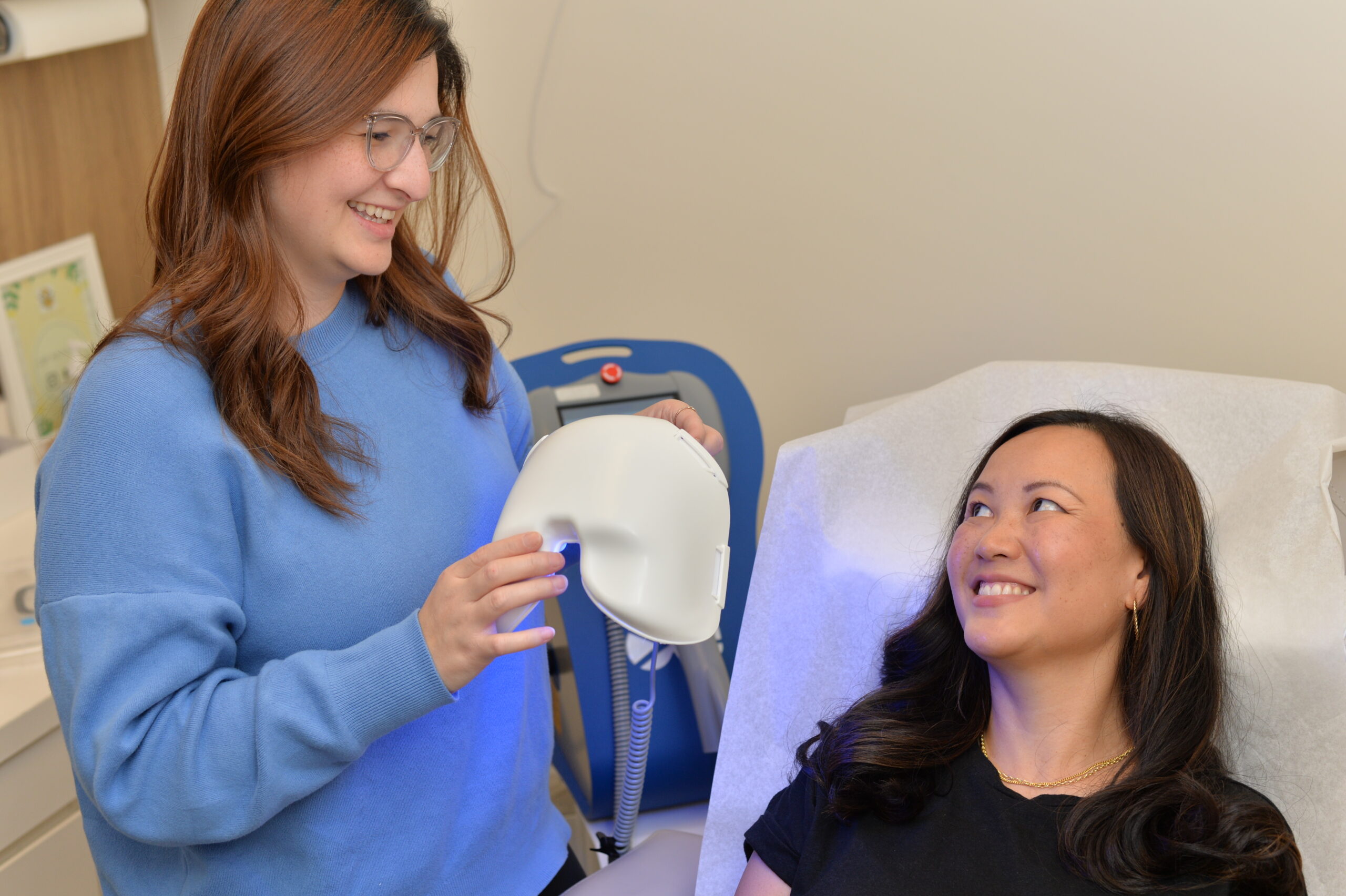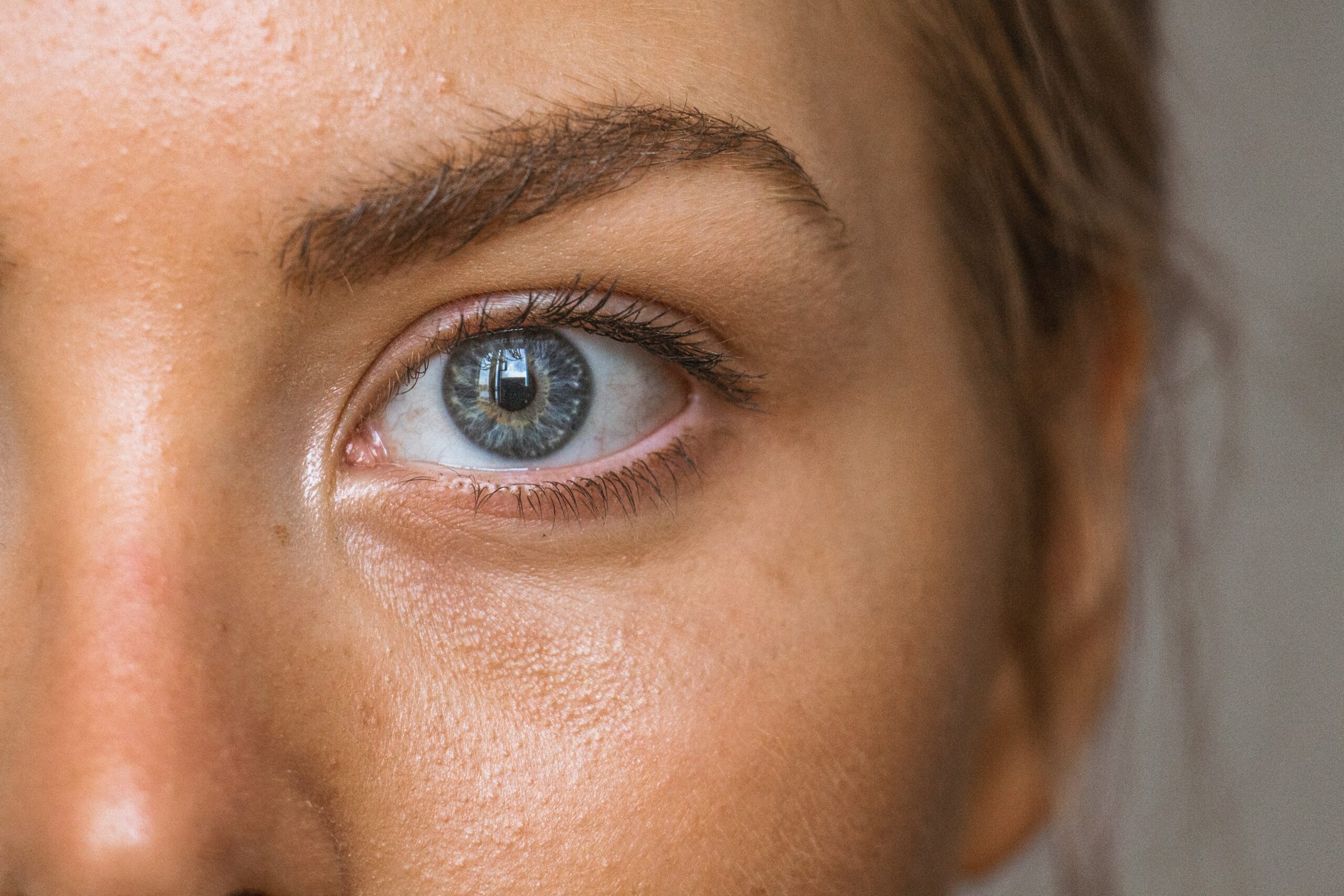Patient Resources
Understanding Dry Eye Syndrome
Your Journey to a Fulfilling Life
Patient Resources
Latest Insights
Understanding Dry Eye Syndrome
What You Need to Know
Dry eye syndrome is more than just an occasional annoyance—it’s a chronic condition that affects your comfort and quality of life. From irritation to fluctuating vision, dry eyes can make daily activities like reading, working, or even enjoying time outdoors difficult. But with the right knowledge and care, relief is possible.
Dry eye occurs when there’s a lack of proper lubrication or moisture on the surface of your eyes. This can result from various factors, including:
- Reduced tear production due to aging or certain medical conditions.
- Increased tear evaporation caused by dry environments or prolonged screen time.
- Imbalances in the makeup of your tears, leading to inadequate hydration of the eye’s surface.

Risk Factors Can Include:
- Female
- >40 years of age
- Contact lens wear
- Digital device use
- Dry and dusty environments
- Smoking
- Inadequate water consumption
- Unbalanced pro-inflammatory diet (lack of omega 3s)
- Female
- >40 years of age
- Contact lens wear
- Digital device use
- Dry and dusty environments
- Smoking
- Inadequate water consumption
- Unbalanced pro-inflammatory diet (lack of omega 3s)
-
Use of eye makeup
- Allergic sensitivities
- History of eye surgeries (e.g. cataract, LASIK)
- Systemic conditions (e.g. diabetes, rosacea, arthritis, thyroid disease)
- Medications (e.g. antihistamines, anti-depressants, diuretics, beta blockers, chemotherapy)
- Use of eye makeup
- Allergic sensitivities
- History of eye surgeries (e.g. cataract, LASIK)
- Systemic conditions (e.g. diabetes, rosacea, arthritis, thyroid disease)
- Medications (e.g. antihistamines, anti-depressants, diuretics, beta blockers, chemotherapy)
Interestingly, many with dry eye disease will complain of watery eyes. This is because the eyes reflexively water when bothered by the irritation. This attempts to compensate for how dry the eyes are. However, tears are mostly made of water – alone, they cannot properly coat the eye and fix dry eye.
A proper tear film that coats the eye is made of 3 layers: water, lipid, and mucin. Water comes from tears produced in our lacrimal gland. Lipid comes from oil in our meibomian glands within our eyelids. Mucin comes from cells in the outermost layer of our eye, the conjunctiva.
Most cases, it is our meibomian glands that are not functioning properly. Without proper oil in our tears, our eyes dry up quickly. The optometrist can use a special scan to see how well your glands are working, and customize a treatment plan for you.
![AdobeStock_375759270 [Converted]](https://onevisionoptometry.com/wp-content/uploads/2024/12/AdobeStock_375759270-Converted.png)

Did you know?
- A watery eye can be a sign of dry eye: Your body may overproduce tears to compensate for dryness.
- Not all drops are the same! If you are using over-the-counter eye drops, please let your doctor know. Some are not meant to be used long-term or more than 4 times a day. Some also have more chemical preservatives in them.
- 20% of people experience varying degrees of dry eye, with females over 40 being at the highest risk.
- Sometimes you can have dry eyes without experiencing any symptoms. It is important to treat these cases to prevent worsening dry eye in the future
- Although there is no cure for dry eye, there are many ways to manage it so that it interferes less with your day-to-day activities.
How to Manage and Relieve Dry Eyes
The good news? There are practical steps you can take to reduce symptoms and protect your eyes:
![AdobeStock_582517187 [Converted]_vv copy 5](https://onevisionoptometry.com/wp-content/uploads/2024/11/AdobeStock_582517187-Converted_vv-copy-5.png)
Reduce Screen Time
Remember to blink regularly while using digital devices to maintain moisture on your eyes.
![AdobeStock_582517187 [Converted]_vv copy 6](https://onevisionoptometry.com/wp-content/uploads/2024/11/AdobeStock_582517187-Converted_vv-copy-6.png)
Avoid Dry Environments
Use a humidifier to add moisture to the air, especially during colder months or in air-conditioned spaces.
![AdobeStock_582517187 [Converted]_vv copy 7](https://onevisionoptometry.com/wp-content/uploads/2024/11/AdobeStock_582517187-Converted_vv-copy-7.png)
Minimize the use of eye cosmetics
Remove makeup thoroughly every day, and practice proper lid hygiene.
![AdobeStock_582517187 [Converted]_vv copy 8](https://onevisionoptometry.com/wp-content/uploads/2024/11/AdobeStock_582517187-Converted_vv-copy-8.png)
Limit Contact Lens Wear
Reduce how long you wear your contact lenses, as they can exacerbate dryness.
![AdobeStock_582517187 [Converted]_vv copy 10](https://onevisionoptometry.com/wp-content/uploads/2024/11/AdobeStock_582517187-Converted_vv-copy-10.png)
Focus on Your Health
Manage underlying conditions like diabetes or arthritis that can contribute to dry eye symptoms.
![AdobeStock_582517187 [Converted]_vv copy 4](https://onevisionoptometry.com/wp-content/uploads/2024/11/AdobeStock_582517187-Converted_vv-copy-4.png)
Kick the Smoking Habit
Smoking damages your tear glands and worsens dry eye symptoms.
![AdobeStock_582517187 [Converted]_vv copy 9](https://onevisionoptometry.com/wp-content/uploads/2024/11/AdobeStock_582517187-Converted_vv-copy-9.png)
Supplement Your Diet
Omega-3 fatty acids, found in fish or supplements, can support healthy tear production.
![AdobeStock_582517187 [Converted]_vv copy 11](https://onevisionoptometry.com/wp-content/uploads/2024/11/AdobeStock_582517187-Converted_vv-copy-11.png)
Use Prescribed Treatments
Use recommended eye drops, hot compresses, and treatments tailored to your needs by an eye care professional.


Comprehensive Dry Eye Treatment
Our Dry Eye Spa offers advanced, in-office treatments to alleviate symptoms and protect your eye health.
Common Symptoms: Burning, stinging, watery eyes, blurry vision, contact lens discomfort, and worse dryness on digital devices.
Treatment Highlights:
- Light Therapy (IPL & LLLT): Opens oil glands for better lubrication.
- Lid & Lash Cleaning: Removes debris and bacteria, similar to a dental cleaning.
- At-Home Care Plan: Maintain progress with personalized lid hygiene routines.
Protect your vision and enjoy lasting relief. Contact us today to schedule your appointment!
